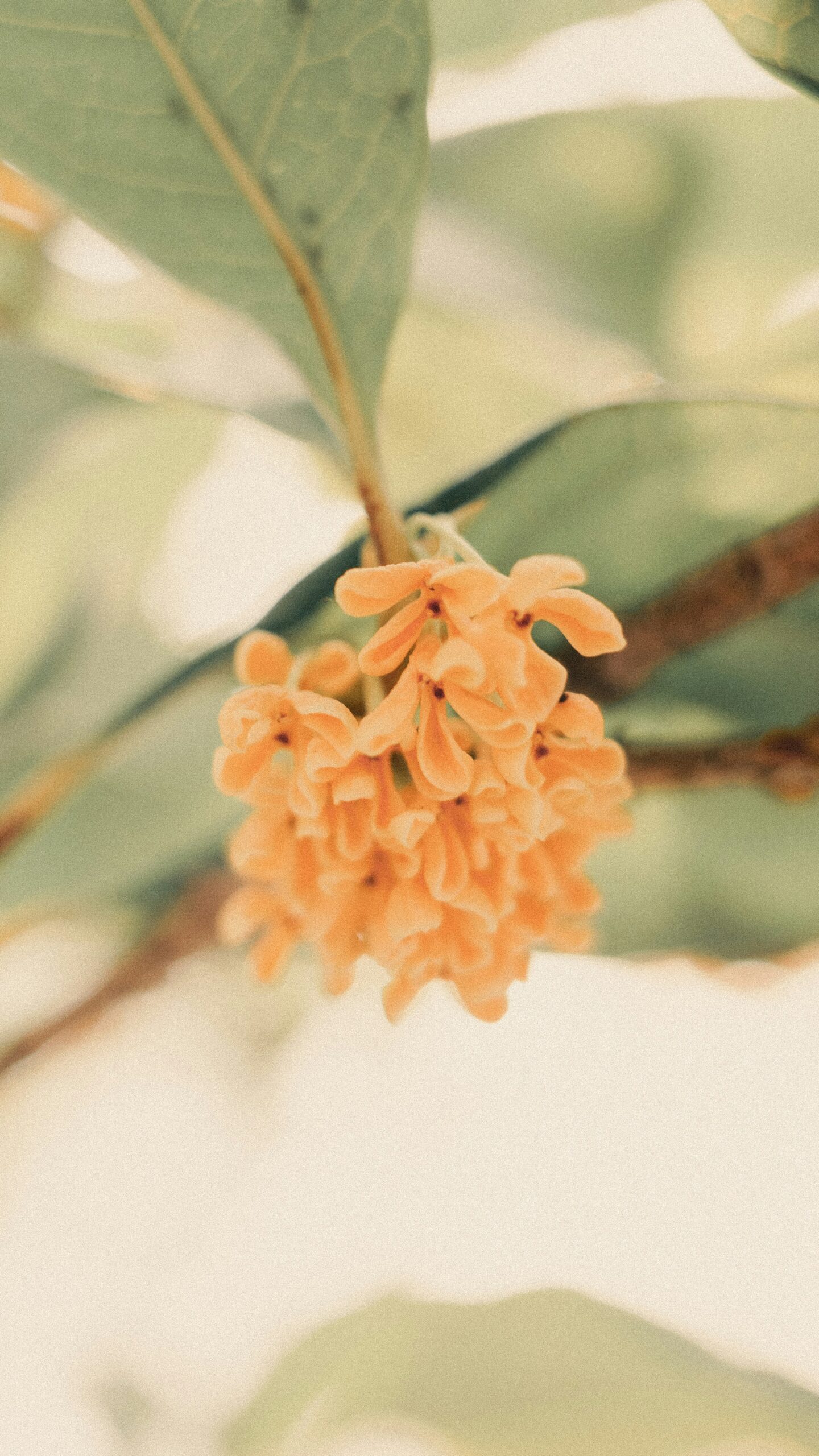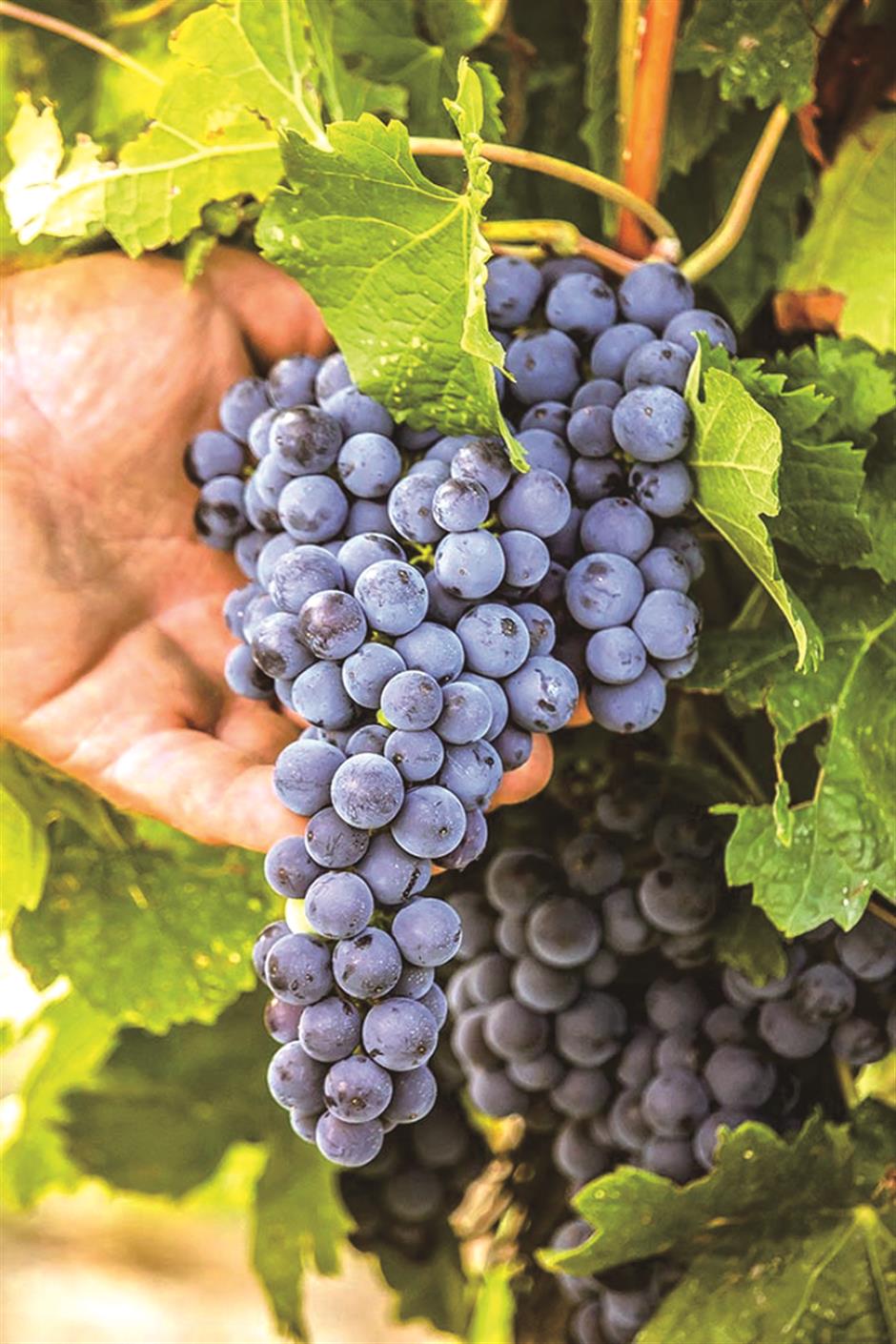The art of wine appreciation has a great deal to do with fragrance. Your nose is one of the most important physical tools used in accessing and enjoying a fine wine. Many times more sensitive than your mouth, the nose not only discerns aromas but also helps heighten your ability to taste. When tasting a wine its best to keep your mouth slightly open and suck in a little air so the faculties of your nose are brought into play. This technique helps illuminate some of the more subtle and often beautiful aromas and flavors that are hidden within a wine. One of the most pleasing and enchanting of these hidden gems is sweet osmanthus flowers.

In addition to the subtle osmanthus sensations in normal wines, a more overt way to experience osmanthus aromas and flavors in wines is when the flower is actually added to the wine.
Osmanthus infused wines
I first tasted an osmanthus wine over three decades ago and it was perfectly awful. While I’m still not a huge fan of wines made with osmanthus flowers, there are some increasingly drinkable examples here in China. Osmanthus wines may be made with grapes, rice wine or other ingredients but the examples I have tasted were all made with white wine grapes. In these wines the osmanthus flower is added to increase the aromatics of the wines resulting in quite unique sweet aromas.
Most of the lesser osmanthus-scented grape wines tend to be quite sweet with obvious osmanthus qualities but little else. In these factory produced wines the heavy fragrance and flavor of the sweet osmanthus overpowers the fruit of the wines. These wines also lack acidity often making them sticky sweet in the mouth. However, the best examples of osmanthus grape wines are made by quality wineries that make normal grape wines as well as osmanthus infused wines. These wines are less sweet and have a nice acidic backbone that freshens the palate. The use of osmanthus is more restrained resulting in a more delicate, balanced and multi-dimensional wine. Some of the better osmanthus wines I’ve tasted are made by Clouds Winery and Viction Winery located in Inner Mongolia.
The Clouds Winery makes a white wine infused with fresh osmanthus flowers. The semi-sweet wine has lively cherry and floral qualities and good acidity. The Viction wine I tasted was also a white wine but the osmanthus flowers where soaked in brandy before being added to the wine resulting in a sweeter wine more suitable for desserts. The wine offers quite concentrated fruit and floral aromas and flavors. The third osmanthus wine I tasted was homemade. A Taiwan wine importer created the wine for the Taipei International Flora Exhibition in 2010. He took several bottles of dry Alsatian Riesling and added osmanthus flower pedals. After two weeks of cold storage the wines were remarkably fresh and exhibited the yellow fruit and mineral qualities of a good Alsatian Riesling along with a delightful, sweet fragrance.
Aromatically
The best wines that feature fragrances of osmanthus are made entirely with grapes. They have no osmanthus added. This is one of the magical qualities of wine, a liquid made entirely with grapes that can offer thousands of beautiful aromas and flavors, including the somewhat elusive osmanthus.
In most wines aromas of osmanthus are quite subtle, usually a secondary or tertiary scent. They are usually found in white wines. Discovering these delicate aromas and even flavors in wine takes some effort. Some of the varietals that occasionally exhibit olfactory sensations of osmanthus are Torrontes, Riesling, Gewurztraminer, Pinot Gris and Muscat. All these popular varieties are known for floral qualities and while scents of roses, violets and other flowers may be more obvious, discerning tasters may also discover the elegant sweet aromas of osmanthus flowers.
Over the past three years I’ve discovered subtle scents and even flavors of osmanthus in a number of wines including three Argentinean Torrontes white wines. The high-end Dominio del Plata Crios de Susana Balbo, 2010 white wine offers several floral experiences with delicate hints of osmanthus on the back palate. Another premium Torrontes wine, the Colome Torrontes 2010, also exhibits plentiful floral qualities, especially rose and jasmine scents but also with a wisp of osmanthus in the finish. Conversely, the INCA Calchaqui Valley Torrontes Chardonnay, 2010 has front palate sensations of ripe citrus fruit ever so slightly scented with osmanthus.
Other dry white wines I’ve tasted that have faint notes of osmanthus flowers are the Gustave Lorentz Gewurztraminer Reserve from Alsace, the Lawson’s Dry Hills Marlborough Riesling from New Zealand and the Marco Felluga Collio Pinot Grigio from Friuli, Italy.
Some ice wines also offer sensations of osmanthus. While in the US two months ago I tasted a bottle of Jackson-Triggs Proprietors Reserve Ice Wine that had lovely sweet floral qualities including hints of osmanthus. Reviewing my wines notes over the past three years I also found osmanthus aromas in top Trockenbeerenauslese TBA ice wines. The Schonberg TBA from the Rheinhesessen region in Germany has very pleasant osmanthus aromas along with other floral and honey scents. You may have to work a little harder to discover the delicate aromas of osmanthus in white wines, but its well worth the effort.





